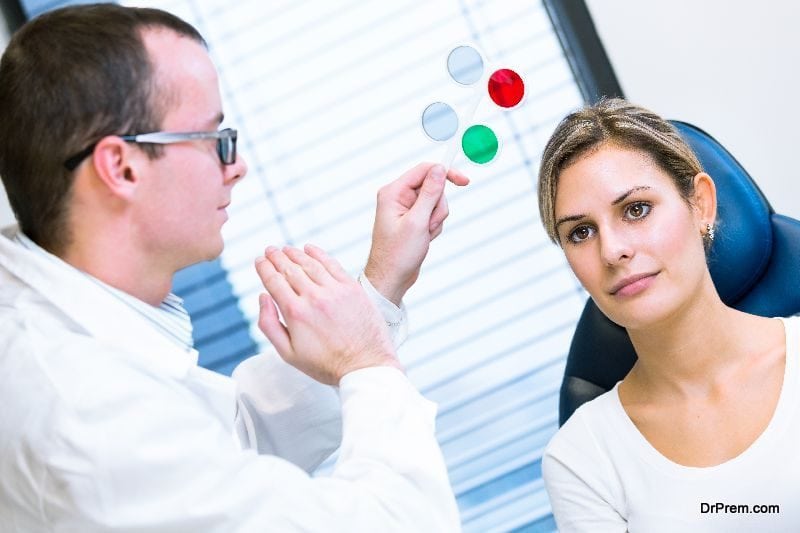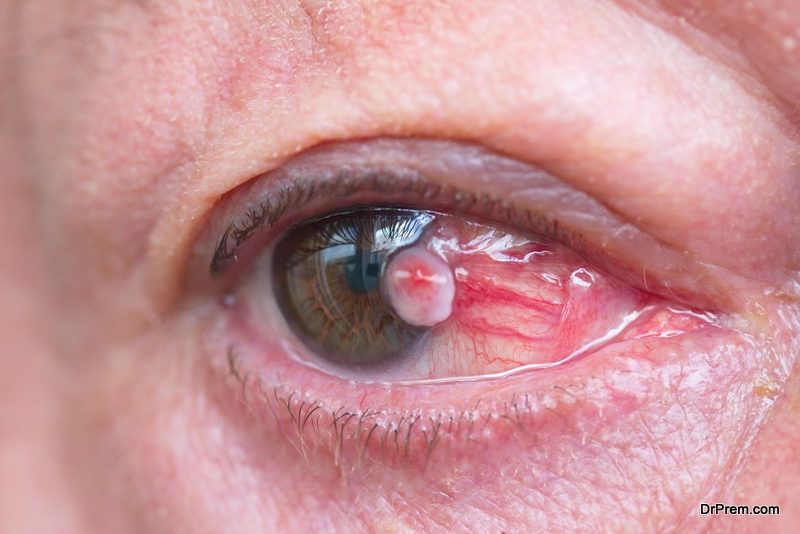Many of us take our eyesight for granted — until we no longer have it. When your vision is compromised, it can make daily life very difficult. From the inability to drive, read, or work to painful headaches and other complications, your eyesight is extremely important to your overall health and well-being. Sadly, there are some vision conditions that occur with age and are completely out of your control, while others are preventable or occur due to injury. Keep reading to discover some of the most common eye-related conditions and injuries that you may fall victim to and how to treat them.
Age-Related Eye Conditions
It’s no secret that as you age, your body simply doesn’t perform or function the way it once did. And your eyes are no exception. Here are several vision conditions you may experience as you age.
AMD (Age-related Macular Degeneration)
 Macular degeneration occurs when the central part of your retina (the macular) breaks down slowly over time. This results in distorted vision and impairment of your central vision. AMD is an age-related form of this disorder and the most common. What makes AMD such a serious condition is the fact that central vision is needed for everyday tasks like driving, reading, and clearly seeing objects and people in your line of sight. The best way to handle AMD is to prevent it. Here are a few ways to prevent macular degeneration:
Macular degeneration occurs when the central part of your retina (the macular) breaks down slowly over time. This results in distorted vision and impairment of your central vision. AMD is an age-related form of this disorder and the most common. What makes AMD such a serious condition is the fact that central vision is needed for everyday tasks like driving, reading, and clearly seeing objects and people in your line of sight. The best way to handle AMD is to prevent it. Here are a few ways to prevent macular degeneration:
- Quit smoking
- Maintain healthy blood pressure and cholesterol
- Include nuts and fruit in your diet
- Eat fish or take a fish oil supplement
- Wear sunglasses to block UV rays
While these preventive measures aren’t a guarantee that you’ll escape AMD, they can help maintain healthy eyes and vision.
Cataract
Cataract is another very common eye condition related to aging. Those suffering with cataract will notice cloudy vision in the eye’s natural lens. Did you know that cataract is actually the leading cause of blindness around the world? It’s also the main cause of vision loss in individuals over the age of 40. There are several types of cataract and each affect the eye and vision differently.
- Nuclear Sclerotic Cataracts – These are the most common type of cataract. With age, a patient’s lens becomes hard and yellows, impairing vision.
- Cortical Cataracts – This type of cataracts often results in a glare from intense or bright lights (most commonly, car headlights), making it difficult to drive and see at night.
- Posterior Subcapsular Cataracts – Cataracts start as a small area near the back of the lens, directly in the path of light, interfering with your ability to see and read. Glares and halos around direct light are also common in this condition.
Most forms of cataracts can be treated using surgery, although early symptoms can be treated using much simpler means. For example, the use of prescription glasses or magnifying glasses can make seeing easier. Using adequate light when reading makes text clearer during the early stages of this condition. Don’t try to squint or struggle to read in a dimly lit room. As the disease progresses, surgery may be required. During surgery, the damaged lens is removed and replaced with an intraocular lens. But your best defense against cataracts is to take preventative methods. Check out this Serrapeptase cataracts article for more information.
Glaucoma
 Glaucoma is a condition where the eye’s optic nerve is damaged. This damage gets worse with time and is caused by a build of pressure. As this pressure (known as intraocular pressure) accumulates, it prevents the optic nerve from successfully delivering images to your brain. Left untreated, glaucoma can result in permanent vision loss. Unfortunately, there’s no way to prevent the onset of glaucoma, but early detection can help reduce your risk of going blind. Glaucoma is a slow-progressing disease and therefore a wide range of methods are used to reduce symptoms and treat the condition. Things like medication, eye drops, laser surgery, or even traditional surgery, can help prevent further vision loss. Sadly, once you’ve lost your vision as a result of glaucoma, it can’t be recovered.
Glaucoma is a condition where the eye’s optic nerve is damaged. This damage gets worse with time and is caused by a build of pressure. As this pressure (known as intraocular pressure) accumulates, it prevents the optic nerve from successfully delivering images to your brain. Left untreated, glaucoma can result in permanent vision loss. Unfortunately, there’s no way to prevent the onset of glaucoma, but early detection can help reduce your risk of going blind. Glaucoma is a slow-progressing disease and therefore a wide range of methods are used to reduce symptoms and treat the condition. Things like medication, eye drops, laser surgery, or even traditional surgery, can help prevent further vision loss. Sadly, once you’ve lost your vision as a result of glaucoma, it can’t be recovered.
Diabetic Eye Disease
Diabetic eye disease includes all eye diseases that impact those suffering from diabetes. These include diabetic retinopathy and diabetic macular edema (DME). Both glaucoma and cataracts can also result from diabetes. But what’s the connection between diabetes and vision? High levels of blood sugar (which often occurs in diabetic patients) can cause swelling in your eye lens, causing temporary blurred vision. On the other side, very low sugar levels may also make it difficult to see. Diabetic retinopathy is caused by damage to the blood vessels surrounding the retina. This is one of the milder eye disorders associated with diabetes, causing only slight vision impairment in most. DME results in a buildup of fluid in the macular caused by leaking blood vessels in the eye. DME occurs following diabetic retinopathy, compromising the details you see.
Common Eye Injuries
 Not all vision loss occurs due to degenerative disorders or old age. Here are a few eye injuries that may impact your sight.
Not all vision loss occurs due to degenerative disorders or old age. Here are a few eye injuries that may impact your sight.
Scratched Cornea
We’ve all been there. You feel like something’s in your eye after being poked or hit with an object. But if the pain, discomfort, and blurred vision doesn’t go away, it could be a sign of something more serious — like a scratched cornea. This is a fairly common injury marked by redness and sensitivity to light. When your eye encounters a sharp or rough object, it can create an abrasion where the cells of your cornea are disrupted or destroyed. The good news is most cornea abrasions heal on their own within a day or two. In more serious cases, an antibiotic may be required.
Traumatic Iritis
Inflammation commonly happens in the human body due to a variety of factors. And your eye is no exception. If you’re experiencing inflammation in your iris, it’s known as traumatic iritis. Your iris is the part of your eye that gives it color. It also controls the amount of light let in. Most iris injuries occur due to trauma or contact, similar to a cornea scratch. This inflammation is usually treated using steroids. To help with the pain associated with a swollen iris, your doctor might recommend eye drops to shrink the pupil and reduce swelling.
Your eyes see you through life (literally). But sometimes, accident, injury, or a disease can impair your vision significantly — sometimes, permanently. By understanding the warning signs and preventative methods you can protect your vision well into the future. You can also search for the top 10 optical clinics near you to know more about how to protect your eyesight.
Article Submitted By Community Writer




